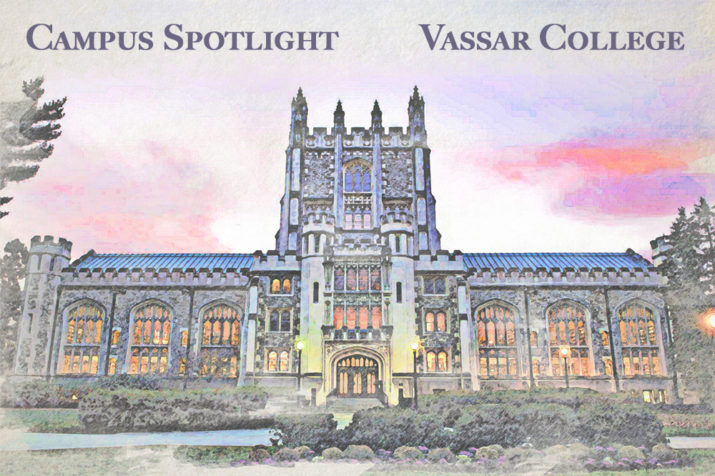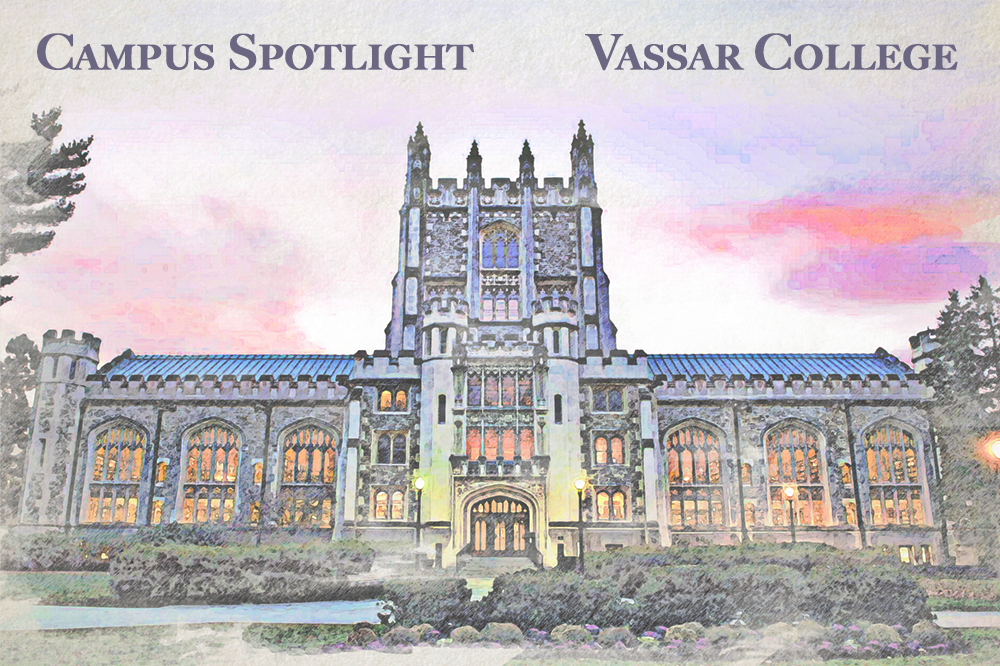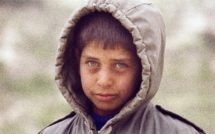

This is part of our special feature on forced migration, Narration on the Move.
A spotlight on Vassar College.
Universities have long been repositories of knowledge and innovation on pressing social issues of the day. Research, teaching, and engaging with local communities are three critical competencies of universities, and they provide tangible new ideas and collaborations that can help society at large. Increasing global migration has touched off new conversations in some quarters, panicked planning in others, and indifference and hate in still others. It is critical that universities insert themselves authoritatively into public conversations, though many institutions today struggle with how to adapt their traditional structures — semester calendars, visa requirements, limited language-of-instruction acquisition courses, mental health support, and more — to meet the needs of an increasingly mobile and precarious global populace. Research priorities and curricular offerings, too, must shift to prepare all students, displaced or not, for life after graduation. How might universities become a more inclusive space for those affected by forced migration? How could university-level courses and research better reflect migrant knowledges? How should today’s students be trained to respond effectively to the future challenges of forced migration?
Students in Vassar Refugee Solidarity and faculty across academic disciplines have been forging ahead since 2015 with efforts to create more opportunities for student and faculty scholarship on forced migration and displacement. They have also innovated new models of engagement with local and international communities. Along with Professor of German history Maria Höhn, guest curator Paul Farber from Monument Lab, and Vassar-based artist and curator Rick Jones, Vassar student Ava McElhone-Yates is currently preparing a public exhibition on migration, displacement, and barriers. Titled “Know Your History and Geography,” the exhibition commemorates the 30th anniversary of the fall of the Berlin Wall while interrogating the ongoing effects of the militarized U.S–Mexico border. Acclaimed photographer Leonard Freed’s images of the Berlin Wall (1961-1989) anchor the historical exhibition, accompanied by a selection of images by Shinkichi Tajiri, Jonathan Borofsky, and Carol Highsmith. This selection is juxtaposed with a student-curated exhibition on the U.S.–Mexico border, highlighting responses by local artists and activists, including Vassar students.
The Campus Spotlight section of this issue contains further examples of Vassar students, faculty, and staff bridging campus and community and tying the liberal arts to well-reasoned action in the wider world. Nancy Bisaha’s research article on the medieval university highlights a misunderstood history of academic refuge and cross-cultural exchange of knowledge. The stories we tell ourselves about the past weigh heavily on our actions in the present; Bisaha’s article urges universities to embrace their roles as sanctuaries for persecuted scholars and students, as liberal arts institutions have long done. We also feature a collaborative essay by Vassar alumna Elise Shea (class of 2019) and professors Eva Woods Peiró (Vassar), and Camelia Suleiman (Michigan State University). The co-authors provide their perspectives on Conversations Unbound, a nonprofit organization that originated at Vassar and connects language learners with refugee teachers. Shea describes the origins and philosophical commitments of CU, and Suleiman and Woods Peiró reflect on their experiences integrating CU lessons into course syllabi. In a separate article, Woods Peiró reflects on her course “Building Inclusive Communities with Latinx Poughkeepsie,” taught in English and Spanish with an emphasis on “uncoerced, deliberate conversations” between Vassar students and Latinx Poughkeepsie residents. Woods Peiró discusses the teaching techniques she uses to reframe how students conceive of town-gown relations and nurture conversations.
Vassar engaged with displaced high school students this summer, the topic of an essay by Matthew Brill-Carlat, the Coordinator of Research and Pedagogy at the Consortium on Forced Migration, Displacement, and Education (CFMDE), who reflects on the first year of the “New Americans” Summer Program for high-school students with a forced migration background aspiring to higher education. Eighteen high-school students took courses, received college counseling, and completed a mural on Vassar’s campus over the two-week duration of the program, funded by the Andrew W. Mellon Foundation through CFMDE. The essay uses the “New Americans” program to ask broader questions about college access, space, and inequality in the U.S.
Filmmaker Jan Müller’s short documentary attests to the lessons learned and the benefits reaped from the New Americans summer program. The film is notable for its content as well as its production process. After teaching students about cinematography and narrative perspective, Müller encouraged them to interview one another. These student contributions, combined with Müller’s footage, provide a compelling account of how both hosts and guests thrive when the campus welcomes high-school-age migrant students.
Next are two student-written essays by “alumnae” of the first Lexicon of Forced Migration course, taught by Brittany Murray as the introductory course to the Consortium on Forced Migration’s curriculum in Forced Migration Studies. Lauranne Wolfe explores the intersections of race, ability, and gender in the context of early-twentieth-century Ellis Island, specifically medical inspections and tests of ability or fitness of prospective European immigrants to the United States. She excavates the fraught, interconnected histories of racism and ableism and signals that their present-day expressions are no less linked. Ava McElhone Yates argues that journalists and researchers must more fully consider the political context of acute psychological distress in refugee youth, taking the little-understood phenomenon of Resignation Syndrome as her case study. Her essay is a call for healthcare professionals to understand their patients as political individuals situated within a global system of displacement, confinement, and precarity.
Recent Vassar graduate (class of 2019) Desmond Curran evaluates three recent monographs on Palestinian refugee identities and identity formation, zeroing in on the importance of making specific observations, rather than blithe, group-level generalizations. Curran’s commitment to specificity echoes the ethos of the other articles in the Campus Spotlight section. Each writer identifies often-overlooked specificities within their chosen topics and reaches conclusions more closely aligned with the self-definitions of displaced individuals — and perhaps different from popular consensus.
-
“The ‘I Learn America’ Project: Vassar College and Migrant Narratives from Poughkeepsie, NY” by Tracey Holland
-
“Displaced Students and Higher Education Access: Reflections from Vassar College” by Matthew Brill-Carlat
-
“New Americans Summer Program at Vassar College” by Jan Müller
-
“Conversations Unbound: Student Engagement with Migration through Language Learning” by Elise Shea, Eva Woods Peiró, and Camelia Suleiman
-
“Building Inclusive Communities with Latinx Poughkeepsie” by Eva Woods Peiró
-
“Ellis Island: Disability and Nationalism in American Immigration History” by Lauranne Wolfe
-
“Resignation Syndrome: A New Conversation” by Ava McElhone Yates
-
“Book Review Essay: Narrating Refugee Identities” by Desmond Curran
Brittany Murray is a scholar of French & Francophone Studies who teaches forced migration at Vassar College. Her first book project was Taking French Feminism to the Streets: Fadela Amara and the Rise of Ni Putes Ni Soumises, and she is working on a book about the 1970s, a decade of economic upheaval, changing gender roles, and new migration policy in France. She is also the Program Coordinator for the Consortium on Forced Migration. Displacement, and Education.
Matthew Brill-Carlat is the Coordinator of Research and Pedagogy with the Consortium on Forced Migration, Displacement, and Education. He is a recent graduate of Vassar College, where he majored in History. Born and raised in Baltimore, MD, Matthew lives in Poughkeepsie, NY.




